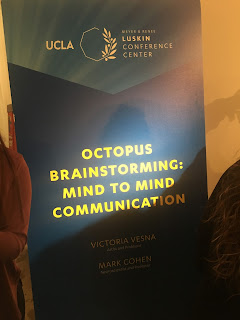Extra Credit Event 1: The Getty Museum

The Getty Museum is like Disneyland. There are just too many things to do and see in one day! I went with two of my friends from this class and we have all already talked about how we are going to come back for the whole day! Going to the Getty Museum and seeing all that it entails, it is hard to believe that it only opened as recently as 1997! The famous picture that almost got us kicked out of the Getty Museum!! The Getty is composed of drawings, paintings, illuminated manuscripts, sculptures, and decorative arts. In fact, one of my friends Hannah got in trouble for going too close to a sculpture. For me, I can see a lot of evidence that math and art coexist when looking inside the galleries. First, I ventured into the Renaissance Art in North Italy and Northern Europe exhibit. In that exhibit, I saw art composed of such interesting angles and perspectives. It made me think back to Frantz article where he talks about vanishing ...

